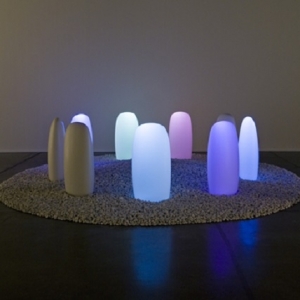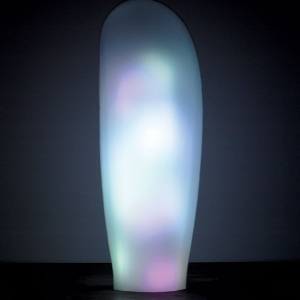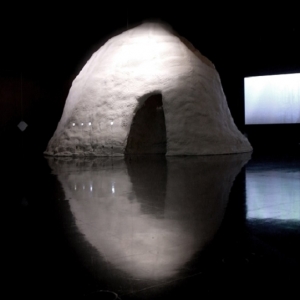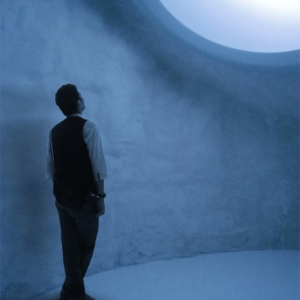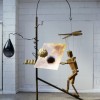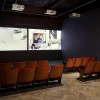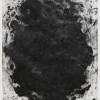Contemporary Japanese artist Mariko Mori has constructed a thought-provoking exhibition: Rebirth. It effectively amalgamates science, philosophy and art, beginning and ending with the death and birth of a star. A mix of the ancient and the modern, Mori showcases her spiritual preoccupation with prehistoric cultures – particularly the Japanese Jomon era and European Celtic history – whilst embracing astronomy and science.
The role of visual arts as a means of communicating scientific knowledge, is often overlooked. This exhibition, however, imaginatively engages the public with science, thereby showing how crucial art can be in science education. The narrative and dynamic use of the exhibition space transforms it in such a way that visitors’ experience is not merely observational, but immersive and interactive. They are invited to explore actively with all their senses, as well as with their intellects.
Rebirth begins with a spectacular installation: a great glass monolith Tom Na H-iu II. Named after a mythical Celtic realm, it replicates spiritual monuments to guide lost souls back to Earth. The five metre high monolith glows with constantly changing, iridescent light. This is a prime example of the artist’s use of state-of-the-art technology, in this case creating a mesmerising sculpture. The LED lights are connected to a computer at the Kamioka Observatory in Japan, an underground cosmic ray research station, which records the energy emitted from the explosion of an enormous dying star, a supernova. Thus, the mystical display of ethereal lights reflects the different types of neutrinos within the Earth’s atmosphere. The rhythmic display of brightening and fading light patterns leaves the viewer entranced by the ‘magic of science’, and in effect the ‘magic of reality’.
The exhibition ends with White Hole, another ‘star’ installation which envisions new life released from a black hole at the centre of the universe. This brings us full circle and marks the end of the viewer’s journey. The viewer is forced through a dark curved walkway into a small low-ceilinged chamber. Seated in front of the hole, the viewer is entranced by the light within that glows and drifts around the edge of the disc in slow motion. The emphasis on fluid boundaries between science and art, then the beauty of the technological display evokes an exalted attention.
Mori is an artist who is fascinated by science and technology. Her exhibition explores science through a predominantly ‘artistic’ style, experimenting with an innovative interdisciplinary approach. Mori lets the art ‘speak for itself’ providing the bare minimum of adjunct elucidative material. This encourages contemplation of the work itself, as the visitor is obliged to take an active role in interpreting the artwork. Whereas science museums often seek to control and direct people’s understanding of scientific principles using didactic methods, Mori shows us how art can inspire people to take a greater and more active interest in science. The extraordinary visual nature of the display stimulates scientific interest whilst evoking curiosity and wonder.
Mori succeeds in representing what is beyond human comprehension. In this memorable exhibition, she brings forth the invisible world in an enchanting visual display. The viewer can witness events that would usually pass unnoticed, thus heightening their awareness of the life cycle of the universe. The brilliance of Mori’s work is her ability to seamlessly fuse science and art to broaden our intellectual horizons. Scientific interest is stimulated by the deepening and enriching experience explored by art’s role in the presentation of science. Mori has fully embraced the power of art to construct a scientifically astounding exhibition.
This intriguing and publicly attractive exhibition, which presents science in a compelling and imaginative manner, shows that science and art collaborations should not be underestimated. Instead, the two polar opposites form a virtuous relationship, generating wonder and magic.

